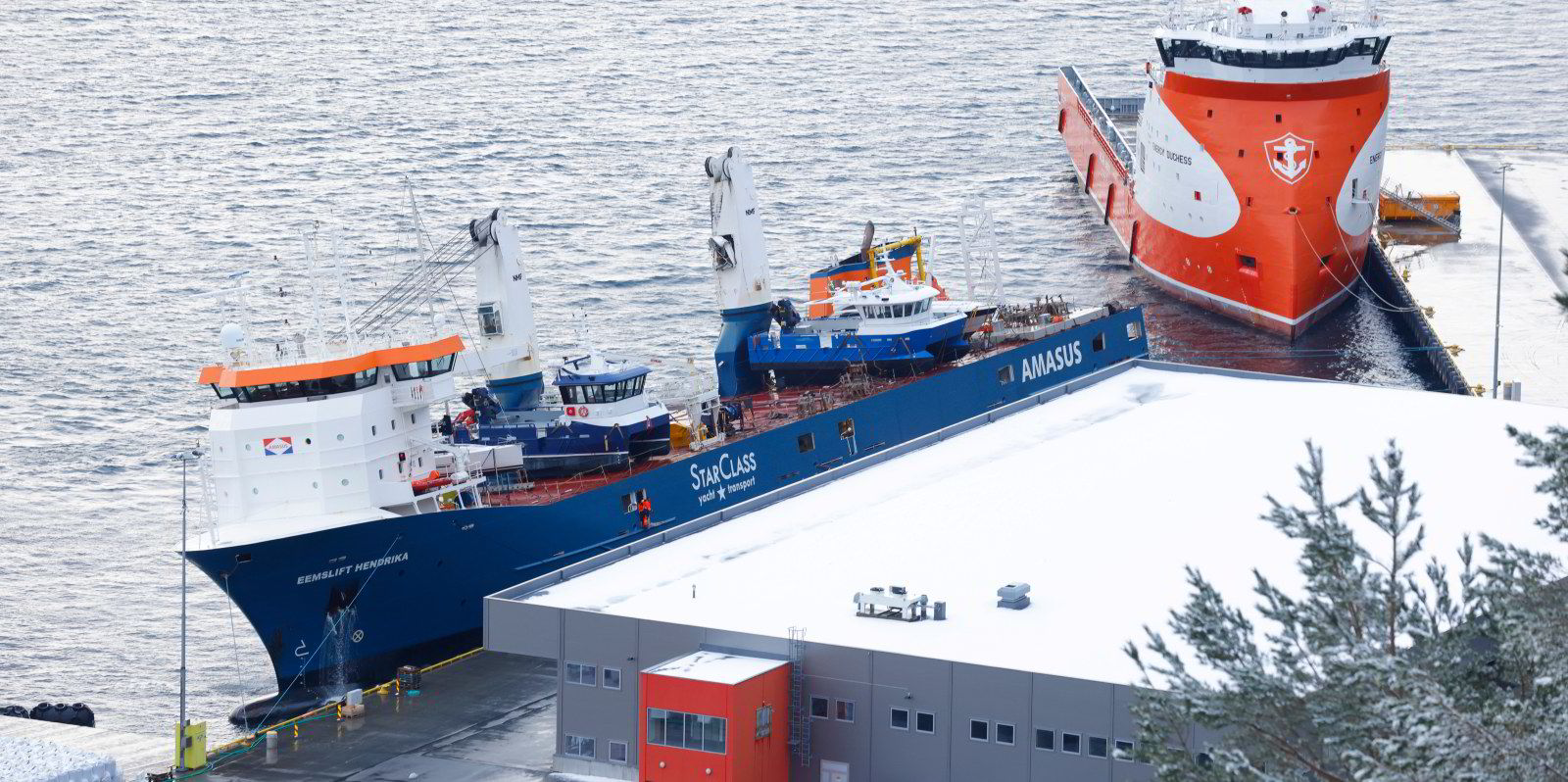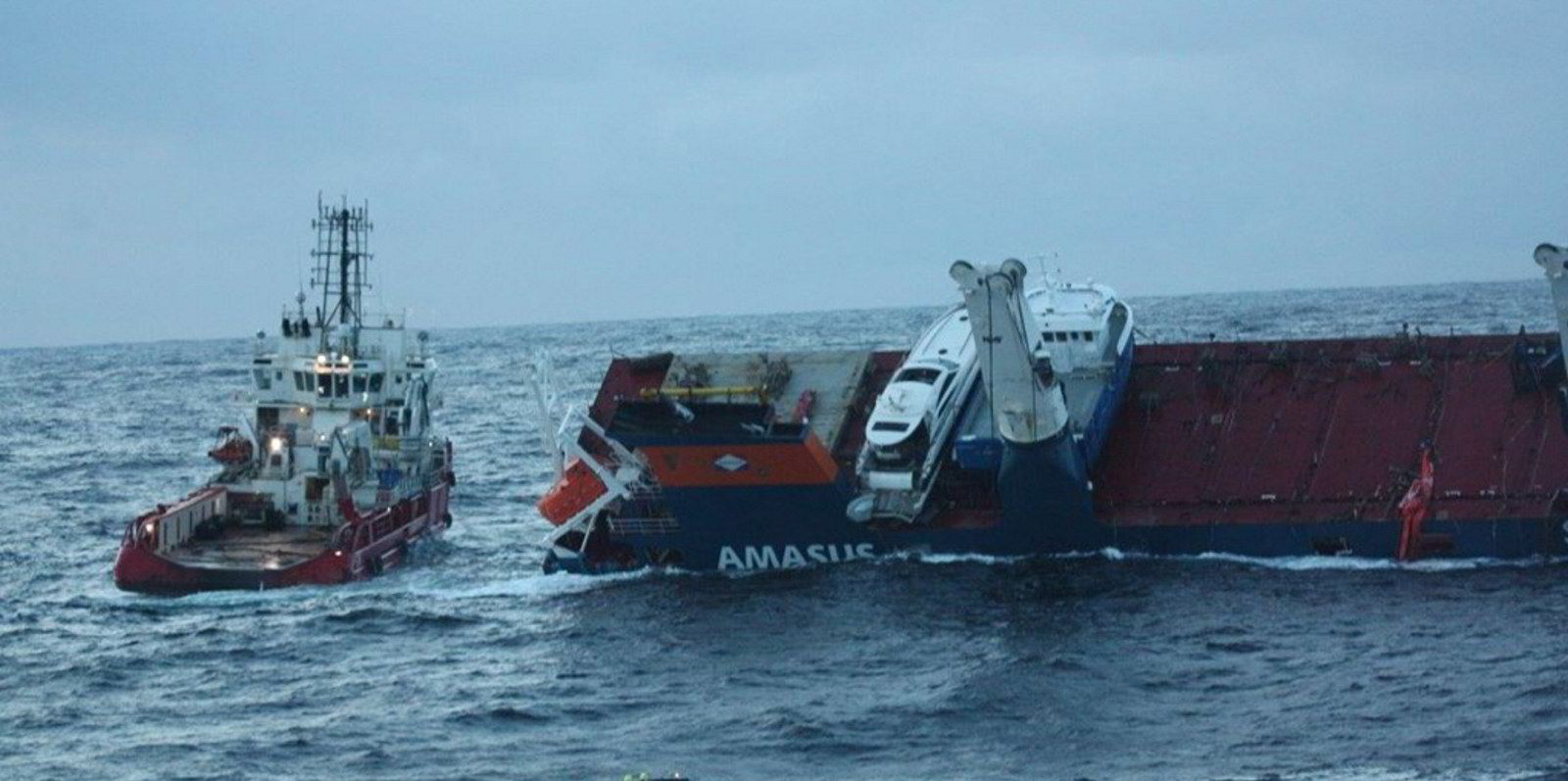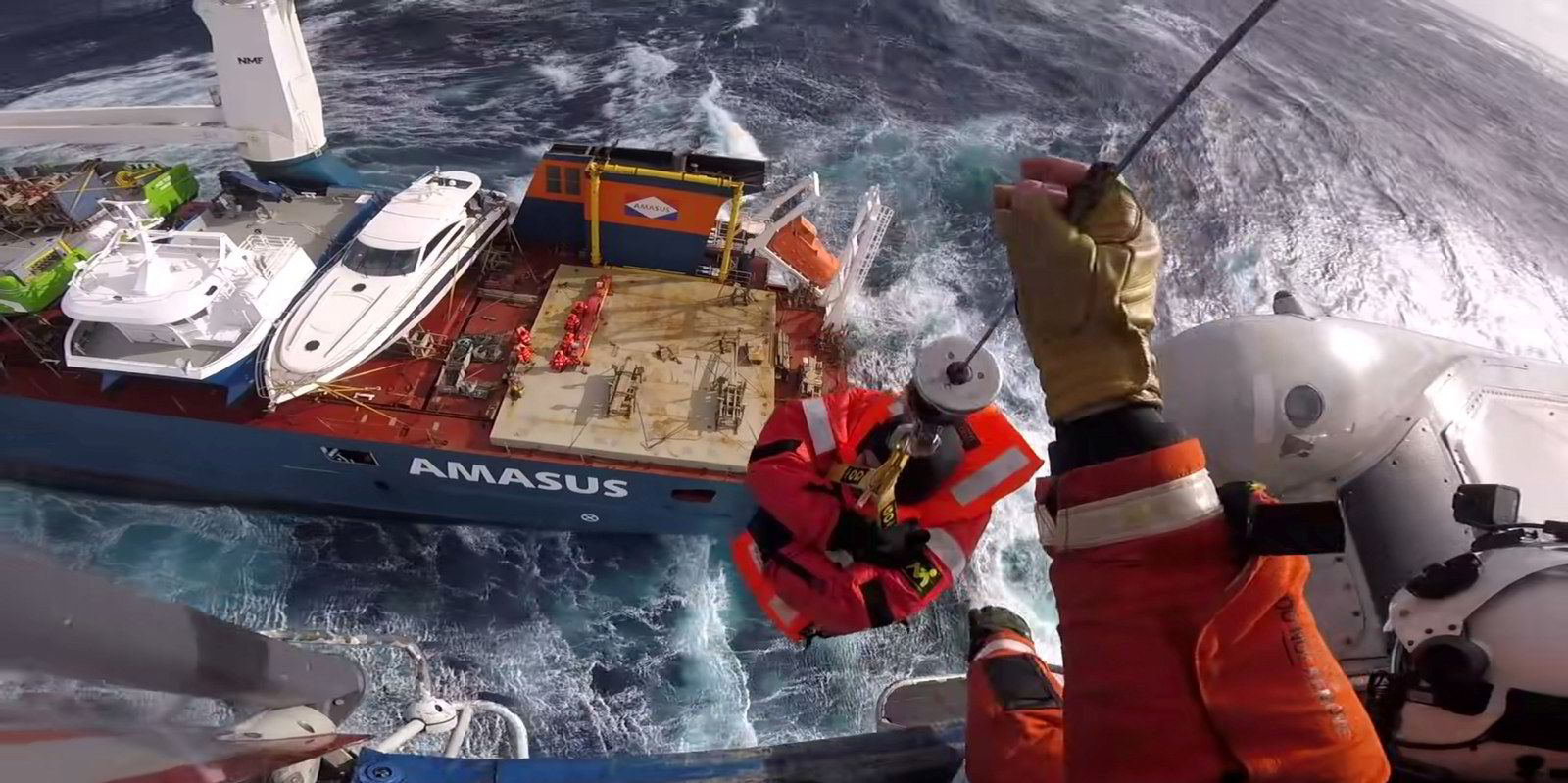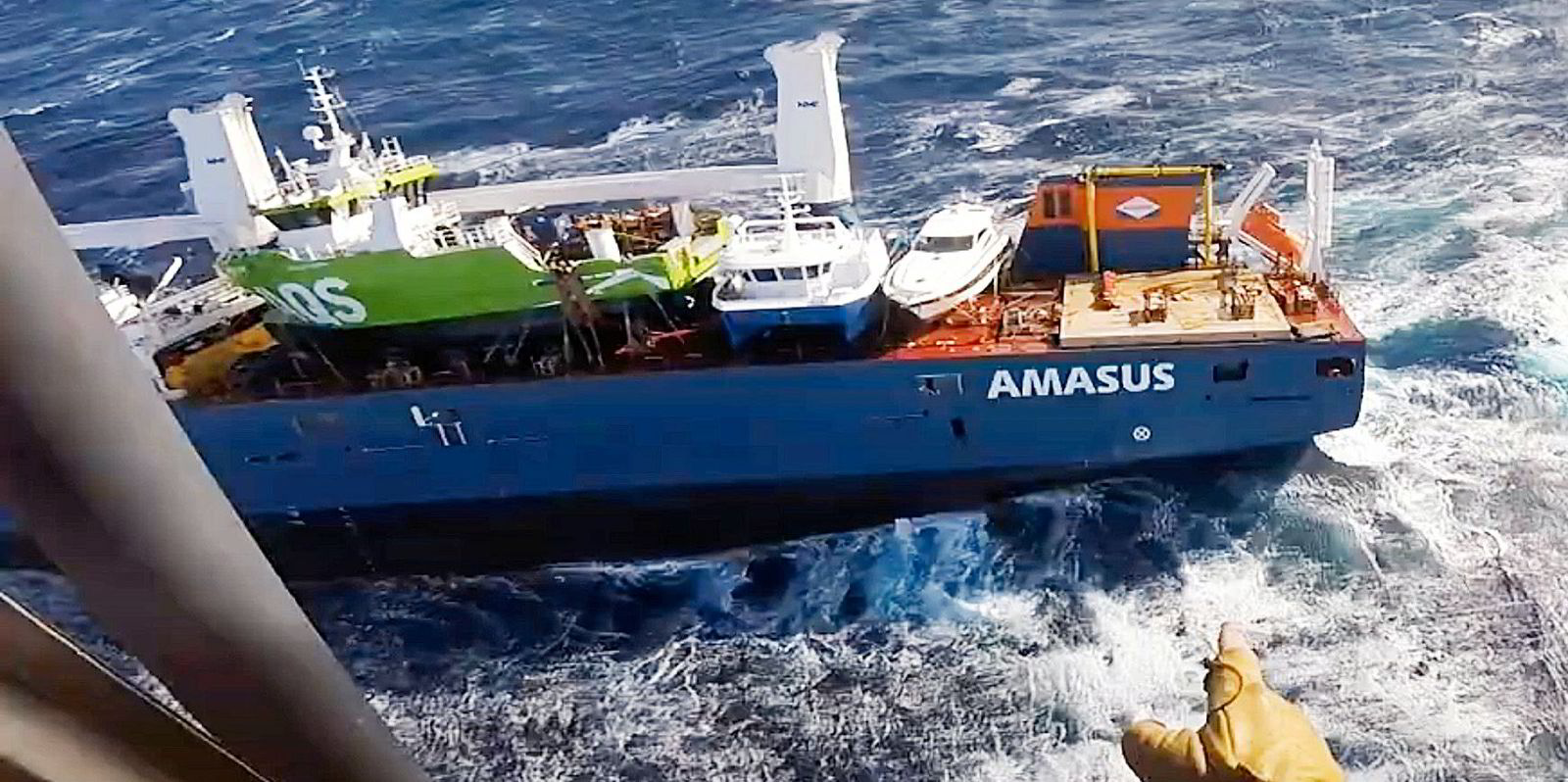Norway would have been "very lucky" to avoid a hard grounding and break-up of a drifting Dutch multipurpose ship if authorities had stuck to their original plans, sources close to the salvage operation told TradeWinds.
Officials had wanted to wait overnight on Wednesday to put salvors on the vessel. But a source close to the operation said Smit Salvage was advising urgent action during daylight hours that day amid relatively favourable weather.
The Norwegian Coastal Authority (NCA) told TradeWinds there was good cooperation with the Dutch salvor in the effort to save Amasus Shipping's 4,200-dwt heavylift multipurpose Eemslift Hendrika (built 2015) from grounding.
But another Norwegian agency, the Joint Rescue Coordination Centres in Southern Norway and Northern Norway (HRS), was telling the NCA to wait for the next day.
That led the planned daylight action to be at first deferred, before it was hastily but successfully carried out just before midnight, after the NCA realised the morning would be too late.
The NCA had already mobilised for oil spill prevention operations.
"The ship would probably have struck land if we had not carried out the the salvage operation on Wednesday night," NCA preparedness director Hans-Petter Mortensholm confirmed to TradeWinds.
The ship was towed into Alesund on the western Norwegian coast on Thursday after the successful operation by the Norwegian Coast Guard, Smit Salvage and two Norwegian offshore vessels, all under NCA orders.
The tow was carried out by two anchor-handling tug supply vessels: Bukser og Berging's 5,440-bhp BB Ocean (built 1999) and Solstad Offshore's 32,972-bhp Normand Drott (built 2010).
'Smit wanted to enter earlier'
A source close to the operation said a change of the drifting vessel's trajectory — as well as a change in the authorities' "risk perception" — helped Smit overcome their reluctance to put salvors on the vessel.
"It was their decision — their backyard, their helicopter, their equipment," said a source close to the operations. "We saw a vessel drifting into the coastline."
Mortensholm largely confirmed that picture, filling it in with some inter-agency dynamics.
"The NCA was advised by the leadership of HRS to postpone helicopter operations because drift calculations and weather conditions implied safer and more secure working conditions for crews the next day," Mortensholm told TradeWinds. "The safety of personnel will always be prioritised."

"Smit's personnel wanted to enter the vessel earlier but the NCA decided at that point in time to follow the recommendations from HRS. The NCA additionally received assurance that the rescue helicopter would be put at its disposal if conditions changed," said Mortensholm.
"There is no disagreement between the NCA and Smit and we have had good cooperation throughout the action."
Sources believe the NCA's orders changed after an intervention at a high level, but Mortensholm told TradeWinds it was an agency-level decision.
"The final decision to mount a state action was made by NCA's preparedness director in consultation with the Coastal Director," he said, referring to himself and NCA head Einar Vik Arset.
Adrift for four days
As TradeWinds has covered throughout the week, the Eemslift Hendrika emergency began on Monday after deck cargo shifted.
The ship developed a severe list, which the crew of 12 were unable to right and had to be evacuated by helicopter.
After preparing to lower salvors onto the drifting ship by helicopter on Wednesday, the NCA announced that the operation had been put off until the next morning out of concern for the safety of personnel.
The NCA took a decision to hasten the operation later that evening, telling Norwegian press around 8pm local time (1900 GMT) that a grounding could occur within 10 to 12 hours. The NCA announced that the ship was under tow before midnight.
Close to hitting the coast
Salvors believed a grounding was even closer.
"We were very much in favour of getting operations underway in daylight," said a source close to the operation.
"But there was a clear statement from the Norwegian coastguard that they wanted to wait until today [Thursday]. Had that pulled through, we would have had a very different outcome."
Salvors believed the ship would hit the coast around midnight in an area that offers very few opportunities for a soft grounding on sand.
"You would have been extremely lucky to drift into one of the bays along the coastline for an easy pick-up," said the source.








